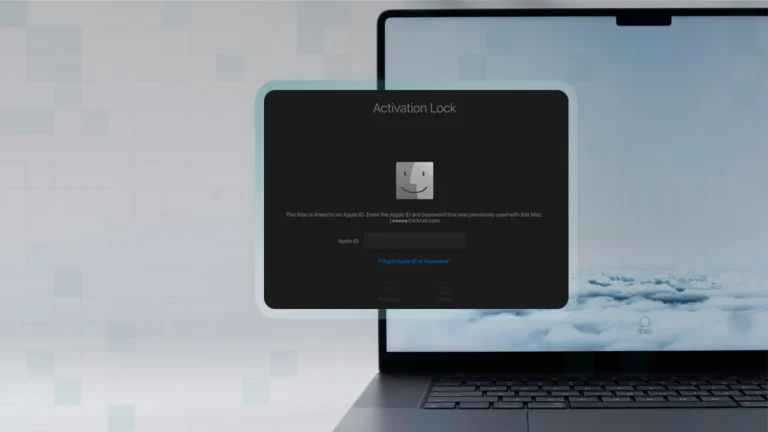Why macOS Compliance Has to Start With Open Standards — Not Vendor Promises
In the Apple IT world “compliance” is talked about frequently, but not always in the same language as regulators and auditors. As more macOS security tools enter the market with their own homegrown interpretations of “secure” and “compliant,” it’s critical for IT teams and MSPs to separate marketing messages from the open, regulator‑aligned standards that actually drive audits and approvals.
Recently, industry conversations have reignited interest in what true macOS compliance looks like, how it’s measured, and why some approaches—especially those built in isolation—can create risk for customers trying to meet increasingly strict standards.
Addigy sits in the middle of this conversation as an Apple‑focused MDM platform that implements the
macOS Security Compliance Project (mSCP) baselines used and maintained by NIST, CIS, DISA, NASA, and the wider Mac admin community. That perspective shapes how our team looks at vendors who choose to roll their own proprietary compliance models instead of adopting the open source standards now referenced by CISA, NIST SP 800‑219, and major audit firms.
The Problem: Redefining Compliance Instead of Meeting It
In macOS security, a worrying pattern has emerged: products that market “full compliance coverage” while using baselines and checks that exist only inside that one vendor’s codebase. Often these are loosely mapped to ISO‑27001, SOC 2–meaningful certifications, but only if the systems used to achieve them actually meet the underlying technical standards.
The issue is that in some cases, tools claiming deep compliance coverage aren’t meeting the stricter benchmarks required for high-assurance organizations—benchmarks like:
- CISA Binding Operational Directive (BOD) 22-01
- CISA BOD 23-01
- CMMC High
- StateRAMP HIGH
- UK Cyber Essentials Plus (UKCE)
These standards demand accurate vulnerability detection, full ecosystem visibility, and the ability to measure controls across the breadth of real-world software installed on macOS devices, not just apps that neatly fit in standard bundles or predefined folders.
When a tool quietly swaps mSCP or CIS for its own private rule set, it is redefining compliance rather than meeting it—and that puts you at risk of failed audits and lost contracts.
Why narrow app-scanning approaches fall short
Some emerging compliance tools rely on metadata alone—things like Bundle IDs, App Names, or the version fields inside .app bundles. But macOS is not an ecosystem where all software fits that mold.
Real-world admins know:
Electron apps, MAMP packages, Homebrew, custom binaries, and developer tools are everywhere.
A compliance scanner that cannot detect or evaluate these simply won’t pass the requirements of higher-tier standards. As a result, organizations relying on such tools may believe they’re compliant.. when they’re not.
This is how compliance drift happens.
Ignoring Community Standards Creates Risk
There’s another pattern we’re seeing in the Apple IT space: some vendors are hesitant to adopt or integrate the open-source, community-driven standards that have formed the backbone of macOS compliance for more than a decade.
Many IT professionals don’t realize that the vast majority of macOS compliance baselines began within the community, long before MDM platform maturity. These projects—originating from JamfNation and built collaboratively with contributors from NASA, NIST, JPL, Apple sales engineers, federal agencies, and private sector experts—established the best practices still in use today.
These compliance baselines are:
- Vendor-agnostic
- Regulator-recognized
- Auditor-approved
- Tested across millions of devices
If you ask experts from NIST, NIS2, CISA, the UK public sector, or many large audit firms, they’ll point you to these community standards. Yet some vendors encourage customers to simply “trust us”—while not aligning with the very standards auditors require.
For organizations depending on their compliance posture to maintain certifications, contracts, or public-sector eligibility, trusting a vendor without the necessary due diligence is a risky venture.
Compliance is a Tri-Force — And Every Part Matters
True compliance requires three components working in harmony:
- Regulatory Bodies
CISA, NIST, NIS2, etc. - Auditors
PWC, KPMG, Deloitte, etc. - You + Your Vendor
The policies and technical enforcement your tooling can actually achieve
When a vendor isn’t aligned to the shared, open rule source, the triangle breaks: regulators and auditors speak “mSCP/CIS/NIST,” while your MDM speaks a private dialect that can’t be verified.
(It should be noted that the more stringent your compliance requirements are, the fewer vendors you’ll even hear mentioned in the conversation. That’s not by accident.)
Addigy’s Perspective: Compliance Is Earned, Not Declared
Your MDM should be as transparent, verifiable, and auditor-friendly as possible. As a platform managing millions of Apple devices across some of the world’s most regulated industries, Addigy takes a very different view of macOS compliance.
Our designs have a few practical benefits for IT teams:
- The baselines Addigy ships are the same ones auditors know, because they originate from mSCP and CIS, not a proprietary rule set.
- Updates to standards (new OS versions, revised CIS Benchmarks, updated DISA STIGs) flow through the open project and into Addigy’s catalog, rather than requiring a vendor to reinterpret requirements in isolation.
- Evidence and reporting are easier: you can hand auditors documentation and control mappings that match NIST’s own outputs instead of explaining a black‑box rules engine.
Addigy doesn’t self-define controls just to “check a box,” we adopt and contribute to community-driven standards. We build tooling that supports real-world macOS environments—not idealized ones.
Bob Gendler, IT Specialist, NIST
“When we developed the macOS Security Compliance Project, we had a vision that vendors could just take the library of rule files and implement them into their product. Addigy was able to see that idea, take it, and build on it in a way to really benefit their customers and the Mac community. Addigy built…“
Above all, we believe compliance claims should be tied to measurable capabilities, not marketing.
This philosophy drives the work we’re doing not only on macOS compliance but also on upcoming Windows and identity security expansions. If your tooling can’t meet today’s Apple-specific requirements, it definitely won’t meet the cross-platform standards mandated by large-scale, high-compliance organizations you do business with.
Why This Matters for IT Teams Today
For MSPs, internal IT, and security leaders, two practical questions cut through vendor marketing quickly:
- Does this product implement baselines from the macOS Security Compliance Project or CIS Benchmarks directly, or is it using a proprietary rule set?
- Can this vendor show how each control in its UI maps to a specific NIST/CIS/DISA control ID, and can those mappings be exported as documentation for auditors?
If the answer to either is “no,” you’re not getting true standards‑based macOS compliance—you’re getting a private interpretation that may not hold up under CISA BODs, CMMC High, StateRAMP, or UK public‑sector scrutiny.
As an organization that has been doing this for more than a decade, we’ll continue publishing resources that help demystify macOS compliance, clarify regulatory requirements, and guide organizations toward the tooling and practices that actually work.
Stay tuned for more compliance commentary and guidance in the months to come.







